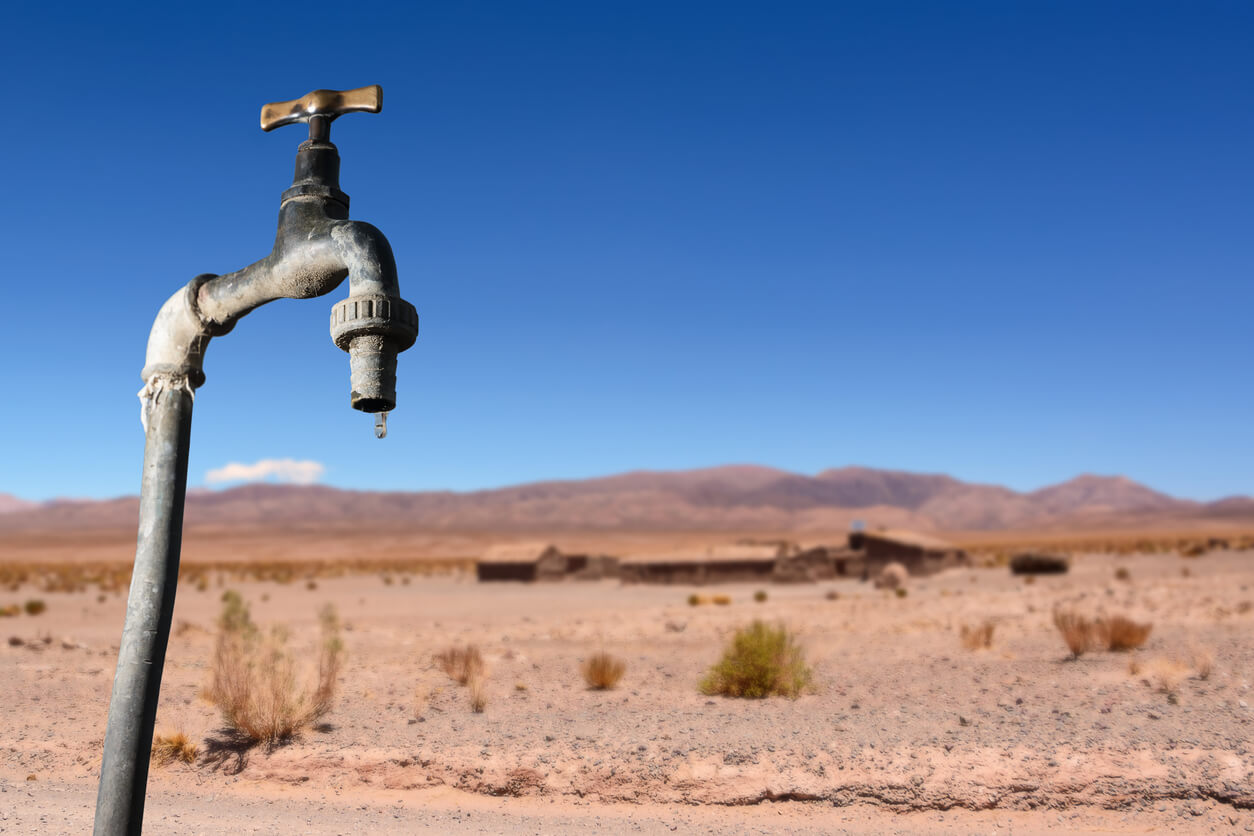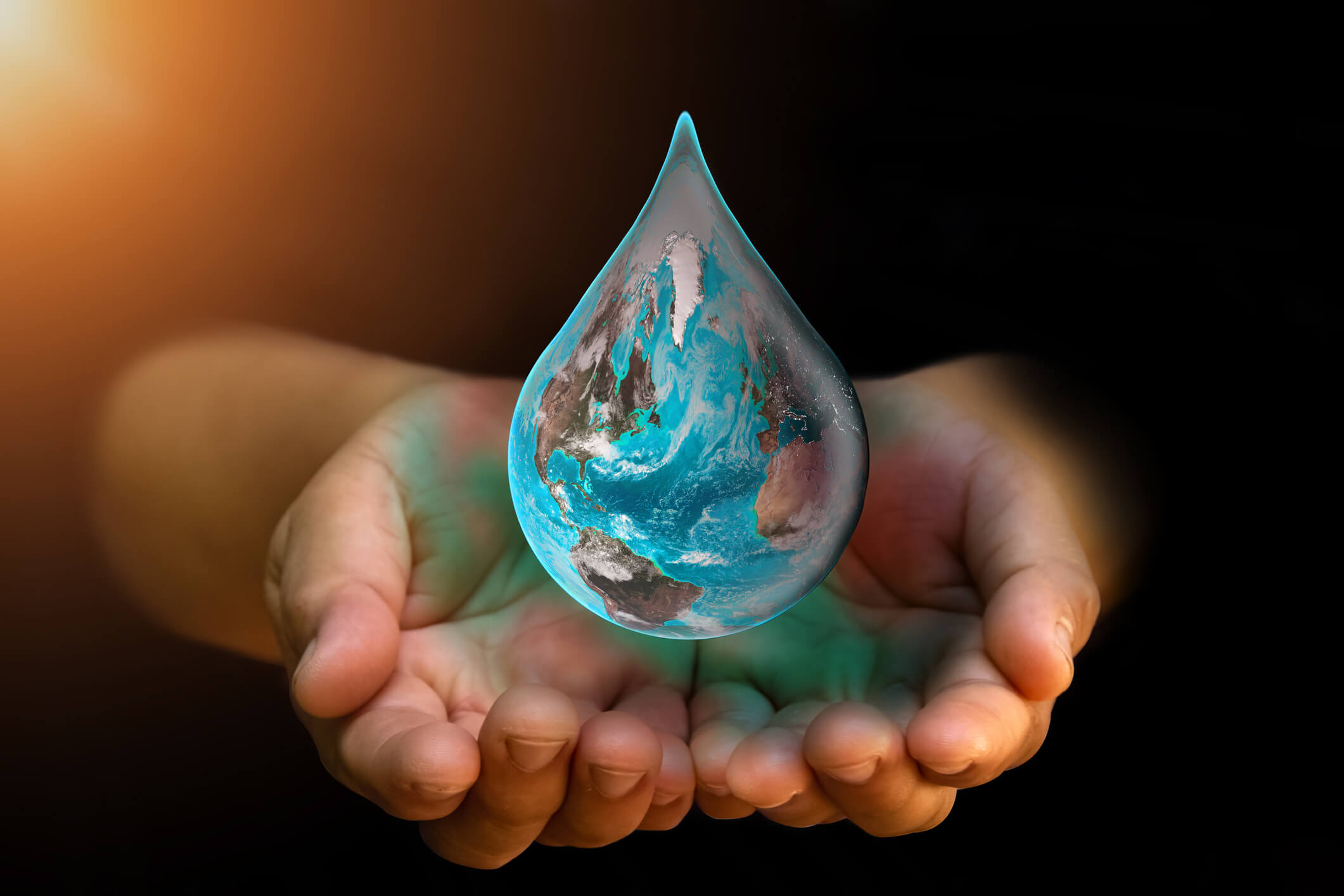What is the connection between climate change and depletion of water resources? From global warming to water pollution, here’s how climate change affects water.
When talking about climate change and pollutionanother equally crucial and urgent problem often comes to mind, namely that of reduction of water resources globally. But how are these two phenomena connected to each other?
In short, if storms are becoming more intense and devastating, if the world is dealing with floods and other climate events of increasingly alarming proportions, why are we facing a progressive reduction in water resources?
What is the cause of the lack of water?? The causes of this problem are undoubtedly many, and it is certainly worth examining them, to better understand what consequences we might face in the near future.
In this article we will see what impact climate problems have on water resources and access to water, the true and only vital force of our planet. We will understand What factors risk worsening the water problem? and what are the possible solutions that we should adopt as countries and as individual citizens.
But first, let’s see which sectors are fueling the water crisis problem and where it manifests itself most.
Where is the water crisis currently occurring?
From arid and desert areas to the most populous urban areas, from metropolises to rural areas, the scarcity of water resources It’s a problem that affects every country in the world, including ours.
We were able to experience this problem first-hand especially during the last summer, when many areas of our country had to deal with the lack of water even for prolonged periods of time.
Some Regions, in fact, have already had to face hot summers with long periods of water shortage, which even continued for entire weeks, with the consequent inconveniences that we can easily remember.
More than 2 billion people in the world today do not have access to drinking water. While many of us squander this precious and fundamental resource, entire populations can only use dirty water, contaminated by excrement and certainly not drinkable. In a word, dangerous water.
What are the risks of water?
The diseases related to the use of unsafe water represent a real and concrete problem for many adults and children, both in developed and developing regions.
As if that were not enough, it is believed that this problem will only expand and worsen over the next few decades, due to factors such as thepopulation increase (the more people populate our Earth, the greater the need for food and water will be globally), the widespread use of water resources in the agricultural sectortextiles and other segments of the manufacturing industry, and of course climate changes that are rapidly modifying our planet.
I more intense weather phenomenamoreover, are contributing to making water less safe, increasingly polluted and contaminated.
But this is not the only cause of the water scarcity we are facing.rising seasincreasingly unpredictable rainfall, the melting of glaciers linked to global warming, the progressive desertification of once green lands are just some of the further causes of water scarcity.
All this compromises the possibility of access to safe drinking water for billions of people in the world, but also entails a decimation of biodiversity vegetable and animal and a progressive impoverishment of our world.
How are climate change and water scarcity connected?

But concretely speaking, how do climate changes affect the availability of water? As we were saying, the causes of the water crisis are many. Among the factors that determine the growing shortage of water resources, we must mention, for example, the progressive sea level risewhich involves a greater salinization of water underground and a gradual reduction of fresh water available on Earth.
Another factor behind the water crisis is the problem of melting glaciersconsidered a large and precious source of fresh water. Even in this case, therefore, we run the risk of seeing the availability of water resources further reduced.
Moreover, due to the devastating climate eventssuch as floods and storms, and due to long periods of drought, water quality is also now at risk. Water resources will be increasingly contaminated by harmful substances, such as fecal residues, pesticides, salt water and fertilizers.
The same progressive increase in atmospheric temperatures can make water less safe, favoring the proliferation of potentially lethal microorganisms and pathogens.
UNICEF says contaminated water is considered one of the greatest threats to health of many children and adults in many parts of the world.
What is causing the world to run out of water? The consequences of the water crisis
Food insecurity, migration, conflicts due to lack of water, damage to health for many people in the world: these are just some of the consequences of the water crisis that are emerging and will emerge in the coming decades.
The Drought and the progressive desertification of once flourishing lands, together with the exploitation of the soil (in the agricultural sector and beyond), are determining an ever-increasing food uncertainty. The problem is very broad, especially if we consider that more than half of the fresh water on this Earth is used to cultivate fields and plantations.
The lack of water resources, as one can easily imagine, would therefore lead to a high level of food uncertainty, which will be aggravated – moreover – by the extreme weather events which we have already been experiencing for several years, such as floods, very violent storms and torrential and unpredictable rains.
Such events not only devastate homes and neighborhoods, but also severely damage crops.
The lack of water (and with it the difficulty in meeting the nutritional needs of the population) can become the cause of large migrations of entire peoples which – as is normal – need this resource in order to survive.
And history teaches us that when an essential good like water is lacking, the risk is that of running into social unrest and conflicts between countries. In short, the water crisis does not only concern the “environment” in the strict sense, but rather represents a problem at a social level, as well as an economic one.
These are the forecasts on the future of water resourcesunless we decide to do something concrete to protect our world, before the point of no return is reached. In the words of historian Thomas Fuller, “we will never know the value of water until the well is dry“.
How to overcome the water crisis?

Materially speaking, what could we do to reduce the water crisis? All of us, from governments to individual citizens of the Earth, should answer this question and work to do something real and make our future safer.
Protecting water, our most precious resource, is one of the main points of Agenda 2030.
Goal 6, in fact, underlines the need for “ensure availability and sustainable management of water and sanitation for all”. To achieve this goal, it is necessary to start managing water resources more carefully and with greater awareness, but not only that.
We already know that drought and desertification are among the causes of the reduction of water resources: both phenomena are inextricably linked to the problem of global warming, a problem that, in turn, is mostly linked to anthropogenic factors, such as the emission of polluting gases and harmful substances into the environment.
Reduce emissions to stem the progressive global warming it is therefore essential to be able to preserve water resources.
To do this, governments and environmental policy makers must necessarily cooperate so that water is placed at the centre of actions aimed at preserving our “blue gold”.
Reviewing water use in agriculture
Today more than ever, it is essential that changes are also adopted in the agricultural sectorwhere crops should be irrigated in a more targeted and intelligent way (drip irrigation or new irrigation technologies).
It is also essential to adopt techniques aimed at improving soil humidity, in order to reduce water waste as much as possible.
To preserve soil health, it is also essential to adopt organic farming techniques, which aim to reduce or completely eliminate the use of chemical pesticides and fertilizers that are harmful to the environment.
Wastewater Treatment
In addition to careful management of water resources through sustainable practices, another fundamental step towards protecting this precious resource is wastewater treatment, which would allow the elimination of pathogens and biological, physical and chemical contaminants, thus providing clean and safe water both for human consumption and for the environment.
What can we do to reduce water consumption?
Finally, in our own small way, what we can do is reduce water wasteadopt strategies that allow you to limit water consumption at home, for example by reusing waste water for different purposes, and give the right value to this resource precious for our future.
Furthermore, we can choose to buy products that are made with full respect for the environment, without polluting rivers and seas, and that involve low water consumption. We can buy latest generation applianceswhich guarantee lower consumption of water, energy and resources.
For those wondering what the forecasts on the future of water resourceswell, the answer depends only on us. With small and big daily changeswe could make our tomorrow safer and greener for everyone.
Sources
Source: www.greenstyle.it


